If you’re running a SaaS product, you know that converting visitors into paying customers is essential to your success. But what are the best ways to go about doing that?
One of the most important things you can do is to have the right pages on your website that are specifically designed to convert visitors into signups. In this post, we’ll share with you the essential pages that every SaaS product needs to improve conversions and bring in more paying customers. Whether you create these pages manually with a fine tooth comb or with SEO tools like Data to Page, it’s important you put in your best effort because these pages are sure to bring in new signups.
Pages every SaaS needs (for SEO)
— Chris Tweten (@ctwtn) May 9, 2022
About
Pricing
Integrations
Case Studies
[competitor] vs [your SaaS]
[competitor] alternatives
[category] software
404 → Content Hub + Contact
Here are the essential pages that are infamous for converting visitors into customers:
#1 – Comparison Pages
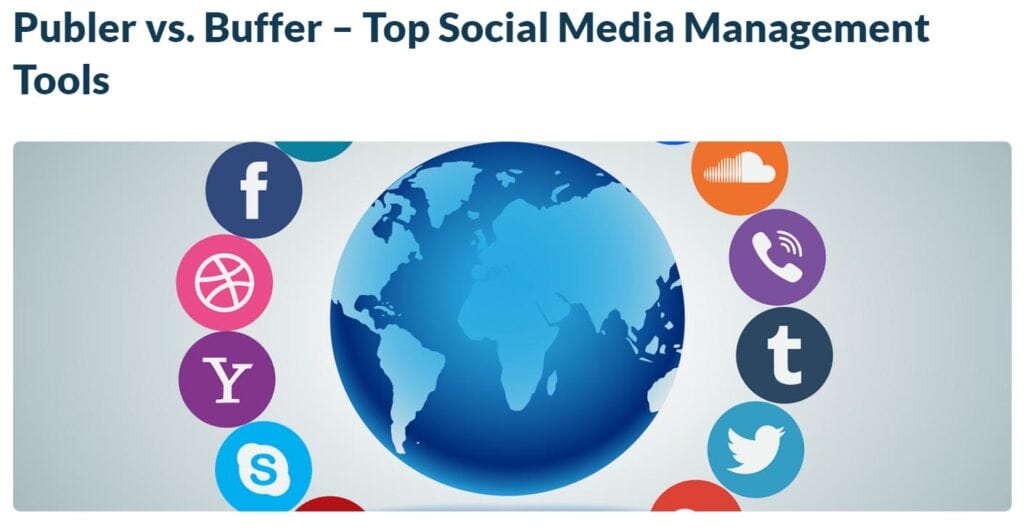
Having a well-crafted comparison page will help you bridge a gap in your marketing and can have you ranking based on your competitor’s brand name. Then, whenever a customer searches for your competitor’s brand, your brand will crop up, and the page will demonstrate how your solution is better than theirs.
Before making a purchase and committing to any product, almost every customer searches for better alternatives and hops on Google to search for “X vs. Y.”
Why not be smart and capitalize on it when you know it happens? Rather than giving your competitor’s the chance, control the narrative and tell your readers exactly how and why your product is better.
If you’d like an example, then have a look at Podia. They have 48 different comparison pages that detail what they offer vs. what their competitors offer, and without being pushy, they can easily convince the readers to choose them.
#2 – Integrations Pages
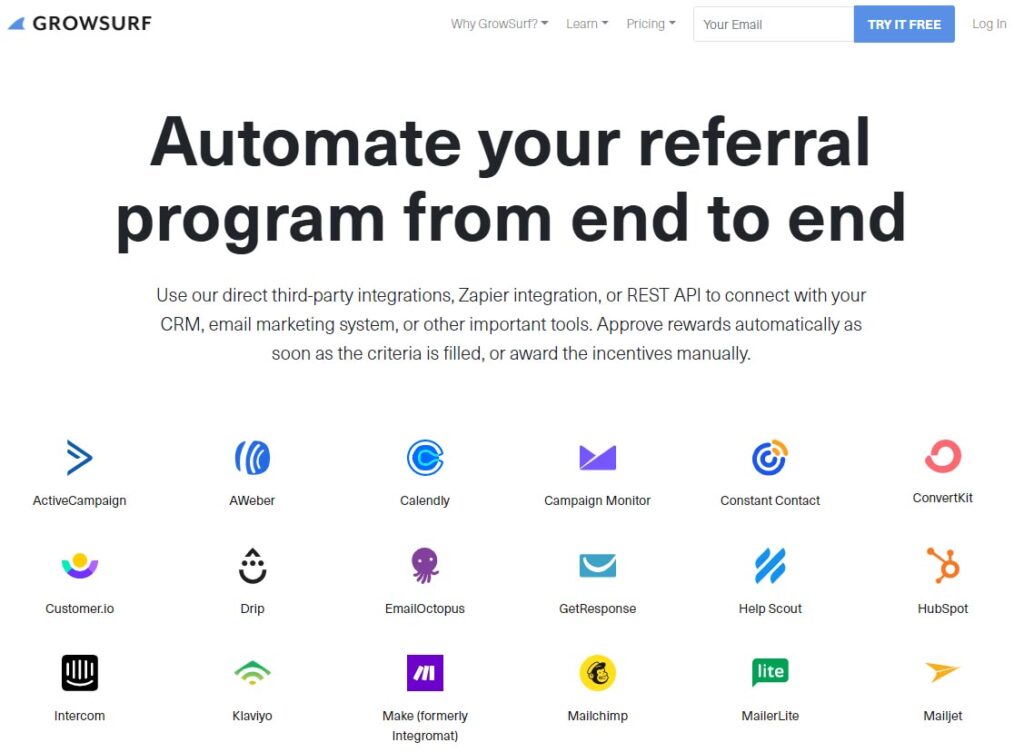
No website or application presents claims to do it all. Meaning people use at least 3-4 different applications daily for their daily chores and work. While your brand or product may not do it all, showing that your product integrates with various other software can make things easier to do and to acquire new customers.
Dedicated integration pages tell your customers what apps you can integrate with. It will also allow you to rank on keywords associated with software that can be integrated with yours.
#3 – “Best” Products Lists Related To Your Industry
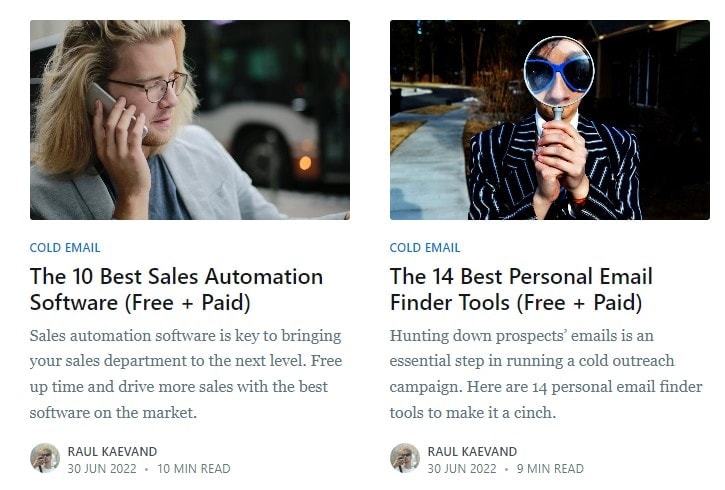
We know that listing other brands that operate in the same industry as yours on your website may not make sense. Think of it this way – customers within the same industry have similar needs. They may visit your website looking for recommendations for some other product/brand, but while they are on your website, they may also check out your products and services.
Having the product lists relevant to your industry builds awareness about your brand, pulls people to your website that may not ordinarily check you out, and could even lead to conversions. At the end of these pages, insert a call to action to improve conversions.
DelightChat, a Shopify chat app, grew traffic from 600 to 240,000 monthly search impressions in 90 days using this method.
However, creating these pages usually takes hours, from designing your templates and writing the content to ensuring they follow all the SEO best practices. This reduces hours of development, designing, and creating to a span of minutes, and you get pages that convert better. Therefore, help promote your brand while saving you time.
#4 – Answer Your Customer’s Questions
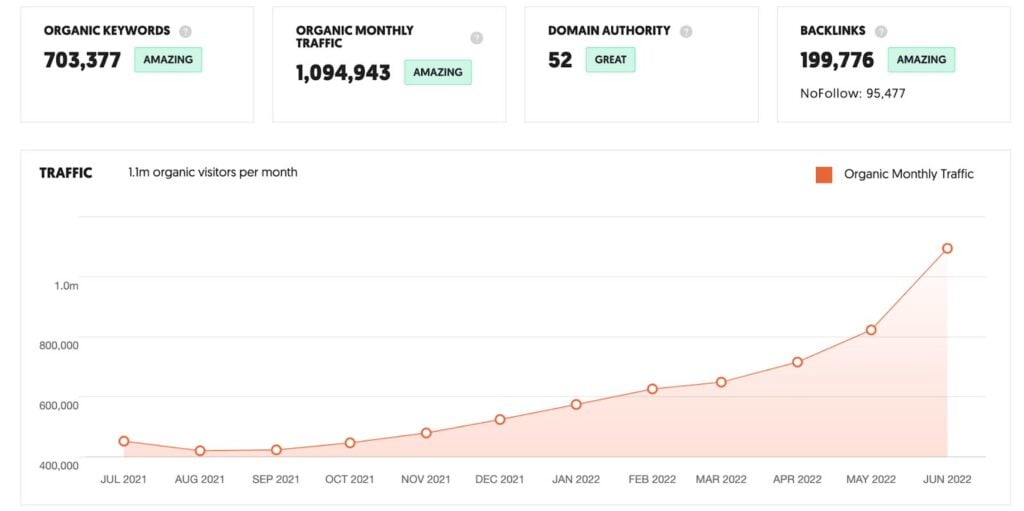
You do not have to dedicate all your energy and focus to selling. Nowadays, people align themselves with a brand that thinks above profits and genuinely focuses on solving its consumers’ problems. Researching your targeted base’s queries and answering them in a dedicated section on your website can help build trust and reliability. By providing genuinely helpful answers, the visitors will have a good impression of your brand and even look for more information on your business.
The queries do not have to be directly related to the product you are selling as long as it is relevant to your industry.
If you want to learn how to implement this strategy more in-depth, I highly recommend reading They Ask, You Answer by Marcus Sheridan.
#5 – Custom Landing Pages
A landing page could be one where you click on an ad, and it leads you to a page, or it could be one with a clear call to action, serving as a service or home page. Regardless of how a user gets there, landing pages are undoubtedly a powerful tool in a business’s content and marketing strategy,
A well-crafted landing page can successfully capture the user’s attention and manage to compel them into doing what you want them to. However, one of the most challenging tasks is to write a landing page that caters to the different types of audiences your business serves. Landing page copywriting is something best left to professionals, so get in touch with us today if you need help ranking your landing pages.
That’s where custom landing pages are helpful. By creating a different landing page for each category of users, you’ll be able to write a more personalized message that converts better. Therefore, you will not be alienating any potential customers from visiting your website.
#6 – About Page
The About page is often one of the most overlooked pages on a website. Yet, it can be hugely important in helping increase conversions for SaaS companies.
Think about it – when you land on a website, what’s one of the first things you do? You look around to see what the company is all about. Who are they? What do they do? And most importantly, can you trust them?
This is where the About page comes in. A well-crafted About page will give visitors the information they need to quickly understand what your company does and why you’re the best at it. It will also help build trust by providing an overview of your team, your history, and your company culture.
All of this can be hugely important in increasing conversions, whether it’s getting someone to sign up for your free trial or making a purchase. So if you don’t have an About page on your website yet, now is the time to create one. Here’s a quick overview of what you should include:
A brief description of your company: Include a few sentences that explain what you do and who you do it for.
Your Team: Introduce the people behind the scenes, including key members of your team and executive leadership.
Your History: Give some context about how your company got started and what you’ve accomplished so far.
Your Culture: Share your company values and give visitors a sense of what it’s like to work with you.
Social Proof: Nothing builds trust like positive reviews from happy customers. If you have any, be sure to include them on your About page.
1 Clear Call to Action: Include a CTA, such as a free trial or demo, to encourage visitors to take the next step.
By including all of these elements on your About page, you can give visitors the information they need to understand your company and trust your brand. As a result, you’ll be more likely to convert them into paying customers.
#7 – [Category] Software
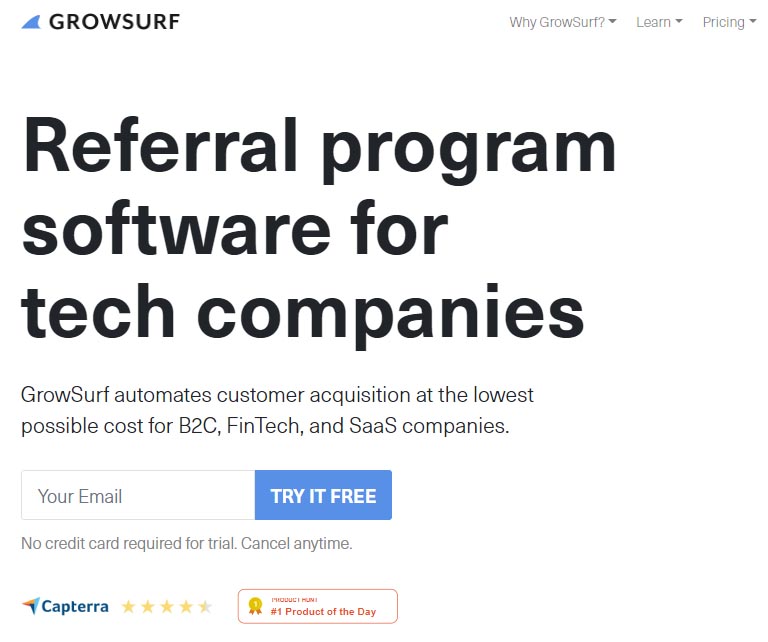
When it comes to positioning your company in the marketplace, a category software page can be an incredibly valuable asset. This is because potential customers will often research the different types of software available before making a purchase, and by having a well-optimized page about the category of software you offer, you can ensure that your company comes up as a top result. Furthermore, a category software page can help to establish your company as an expert in the field, which can further increase its chances of being chosen by potential customers.
Your homepage is a great place to tackle this type of keyword.
#8 – 404 Content Hub
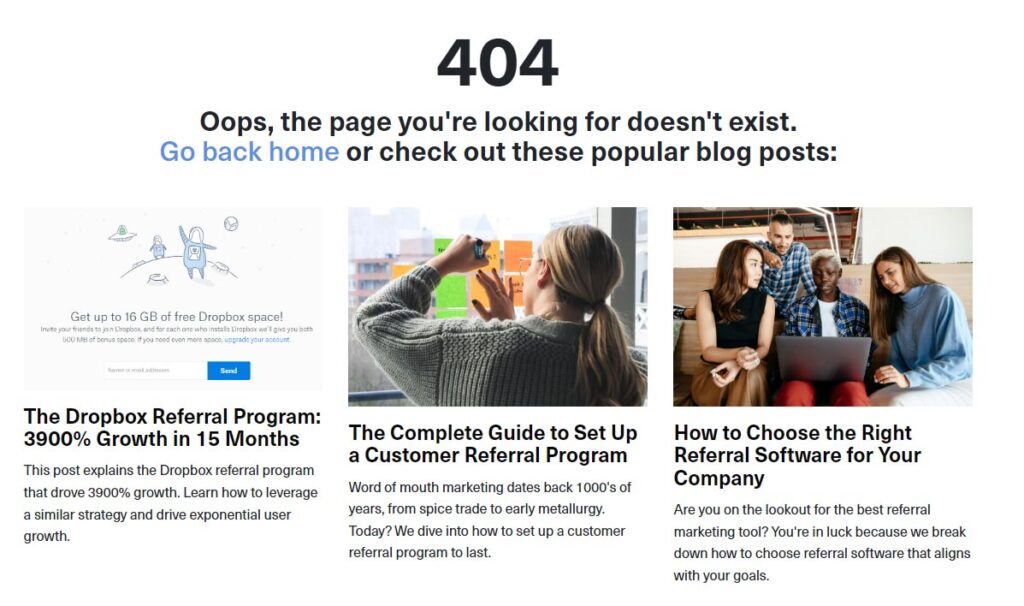
If your software as a service (SaaS) company doesn’t have a robust 404 page, you could be missing out on a valuable opportunity to increase conversions.
A well-designed and executed 404 page can function as a powerful content hub that helps visitors find the information they need and navigate their way to your site’s most important pages. By prominently featuring links to your most popular content, your 404 page can serve as a powerful tool for driving traffic and engagement.
#9 – Pricing Page
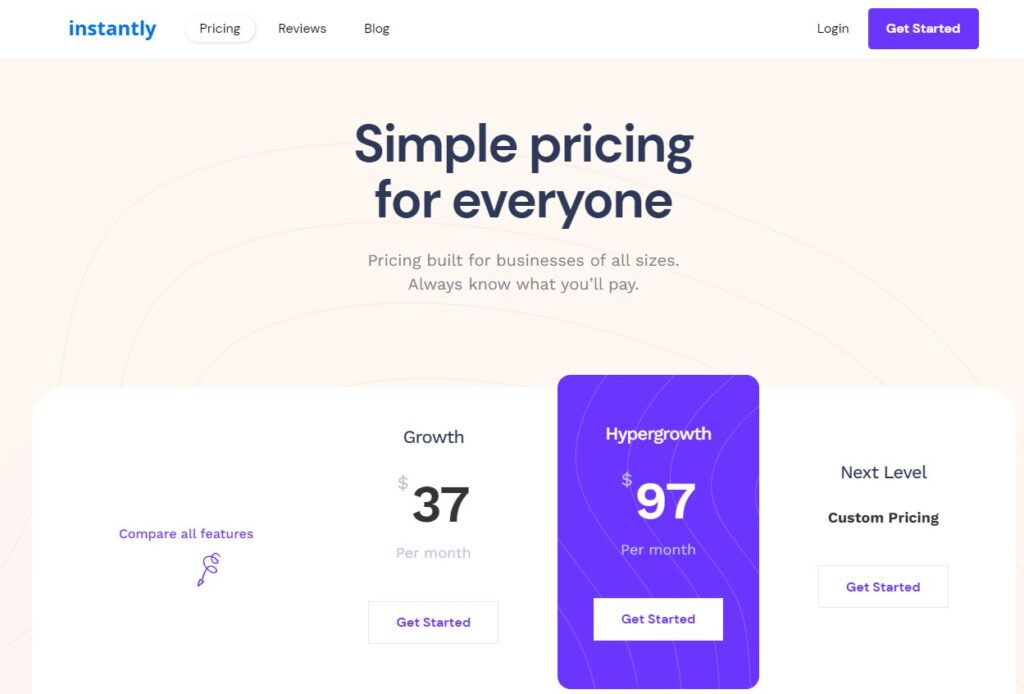
Your pricing page is often the first stop for potential customers, and it’s crucial that they understand what your product offers and how much it costs. There are a few key reasons why having a well-designed pricing page can help increase conversions for your business.
First, a pricing page helps establish your product’s value. Potential customers need to know that your product is worth their money, and a pricing page is a perfect place to showcase this. Include information about what your product does, how it’s different from other options on the market, and what customers can expect to get out of using it.
Second, a pricing page can help build trust with potential customers. When people understand what they’re getting for their money, they’re more likely to trust your product and company. Be sure to include testimonials from happy customers on your pricing page to show that others have had success with your product.
Finally, a well-designed pricing page can make the purchase process easier for potential customers. Include clear and concise pricing information, as well as easy-to-use purchase buttons. Make it as easy as possible for people to buy your product, and you’ll see your conversion rates increase.
Final Thoughts
When learning how to convert visitors into customers, it’s always worth keeping all target audiences in mind. Publishing landing pages that are not relevant to your industry is not a good idea, as it defeats the object of what you’re trying to sell.
You do not have to focus your mind on entirely selling. Instead, you need to create a brand that has the reputation and first impression of solving a web visitor’s problem. For example, one search query could be ‘How to stay protected from mosquito bites’. Your landing pages ought to include recommendations and products available for attracting mosquitos.
Creating integration pages is also a good idea to improve conversions, as this method of turning visitors into buyers allows you to implement keywords on other software or online platforms. This not only increases your traffic, but makes your brand seem more trustworthy to searchers.
Landing pages involving product lists often attract visitors to view your content. Thus, putting a sneaky call-to-action button at the end of your own pages is a good idea. Although, don’t try to make it too obvious – keep it engaging and subtle.
Read More: SaaS SEO Essentials: How To Do SEO For SaaS Companies